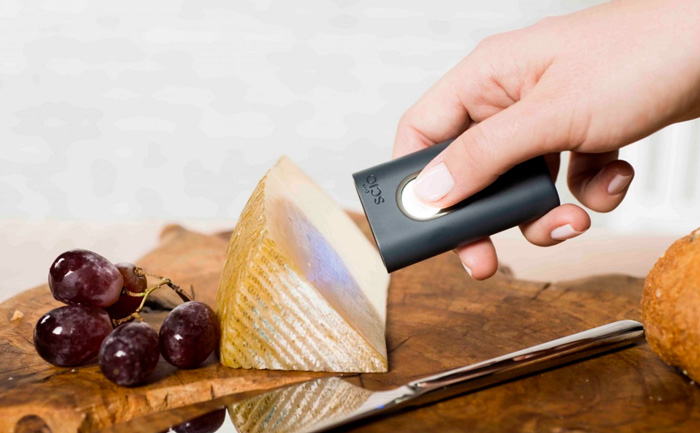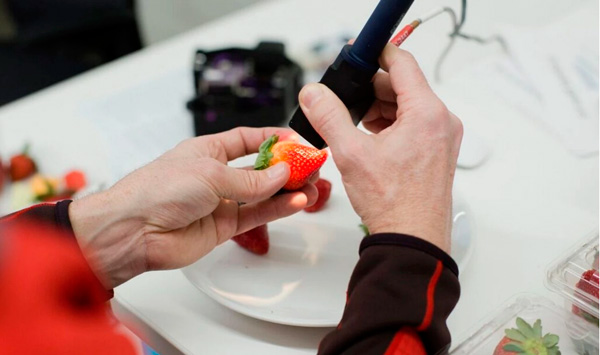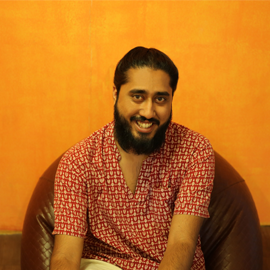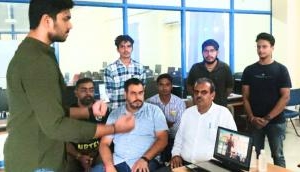Food labels are passe. New molecular sensor reveals what's really in your food

Does your cereal really have less sugar than the other brands? Is your tea really enhanced with super berry extracts and is that really an egg-less cake? Whether you're allergic, health conscious or just plain curious, knowing what's in your food is an intriguing prospect.
And now it's a reality.
Companies like TellSpec, SCiO and others are leading an information revolution that will finally let you know exactly what the world around you is made of. From the sugar content of your morning cuppa to the allergens present in your Chinese takeout, their new molecular sensors can tell you exactly what you're putting into your body.
These new devices will show you what the world around you is made of, and they're just getting started
Not just food either, you can even tell the chemical composition of your medicines and the health of your garden plants. What's more, all of this is possible with affordable devices that fit in the palm of your hand.

Photo: SCIO
The science behind it
For all its possibilities, the actual science and technology behind these devices isn't new.
It relies on the principle that different things have different molecular compositions and hence reflect light differently, giving each substance its own spectrum which acts as an optical identifier.
Also Read - Microsoft's new software can tell how you're feeling from a photo
Up until recently the smallest of spectrometers were the size of a microwave oven and cost a ridiculous amount. Further, their output is useless to a layperson.
Not anymore.
Both SCiO and TellSpec have managed to create highly accurate handheld spectrometers that are the size of a really compact cell phone. With these, users are able to scan objects around them to find out their optical signature. But still, this information is useless to the everyman.
Which is where their cloud databases come in. Both SCiO's as well as TellSpec's devices sync to an app on your mobile phone. The app uploads the information received from the sensor to a cloud database that matches the optical signatures to their specific substances. The result?
A slow start, but a bright future
It sounds decidedly magical, but before you go throwing your money at the nearest molecular sensor, you might want to give it a little while longer. At present both devices are handicapped by the size of their spectrum libraries. Understandably too.
After all, it isn't as simple as scanning an object. Researchers have to scan the same objects over time so that the sensor isn't confused by deteriorating nutrients as well as understand the differences between different strains of the same fruits and vegetables. This takes expensive and time consuming testing in laboratories, meaning building these libraries is a painstaking process.
So at present, your straight-out-of-the-box SCiO can tell you the nutritional composition of your food and drinks, the health of common garden plants and even allow you to identify medicines or, conversely, the chemical composition of known medicines. It's enough to ensure you never buy a sour orange or a less-than-sweet melon again, but that's just the start.
As more users use it on new objects, and as the company itself researches new things, the more the library grows. And the more it grows, the further the technology goes.

File photo
In the future, as the technology and database improves, we could potentially use these gadgets to even identify the ripeness of various foods. We could potentially identify foods containing pesticides. We may even be able to identify genetically modified foods, assuming these modifications leave an optical fingerprint.
Adulteration of foodstuffs and the presence of a vast spectrum of allergens from gluten to nuts to eggs could all be problems of the past. Errant food suppliers could potentially be hauled up for sub-standard food production practises.
Going beyond food, we'll be able to check the composition of cosmetics, clothes, soil, jewels and oils, literally changing the way we consume.
Edited by Payal Puri
Also Read - Go, Going, Gone: AI just beat the world champion in the world's toughest game







![BJP's Kapil Mishra recreates Shankar Mahadevan’s ‘Breathless’ song to highlight Delhi pollution [WATCH] BJP's Kapil Mishra recreates Shankar Mahadevan’s ‘Breathless’ song to highlight Delhi pollution [WATCH]](https://images.catchnews.com/upload/2022/11/03/kapil-mishra_240884_300x172.png)

![Anupam Kher shares pictures of his toned body on 67th birthday [MUST SEE] Anupam Kher shares pictures of his toned body on 67th birthday [MUST SEE]](https://images.catchnews.com/upload/2022/03/07/Anupam_kher_231145_300x172.jpg)






